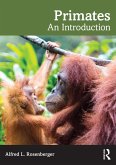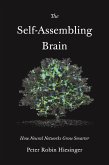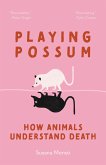The primary goal of this volume is to advance the conceptual unification of primatology and the other evolutionary sciences, by addressing the evolution of behavioral flexibility in the Primate Order. One of the first lessons learned in introductory statistics is that events in the world vary. However, some species exhibit a greater range of phenotypic plasticity, including behavioral flexibility, than others. Primates are among those taxa advanced to display an uncommon degree of behavioral diversity. This volume explores the behavioral ecology and evolution of behavioral flexibility in primates in relation to the optimization of survival, (inclusive) reproductive success, and phenotypic influence.
Behavioral Flexibility in Primates: Causes and Consequences proposes that genetic conflicts of interest are ubiquitous in primates who may employ force, coercion, persuasion, persistence, scrambles, cooperation, exploitation, manipulation, social parasitism, dispersal or spite to resolve or manage them. Where one individual or group imposes severe costs to inclusive fitness or to the phenotype upon another individual, the latter may adopt a counterstrategy in an attempt to minimize its own costs. Counterstrategies may, in turn, impose costs upon the original actor(s), and so on, possibly yielding an evolutionary "chase" ("interlocus contest evolution"). The evolution of phenotypic plasticity in primates may often pertain to attempts to mitigate genetic conflicts of interest, and classic work in behavioral ecology leads to the conclusion that for females ("energy-maximizers"), conflict will pertain primarily to competition for food (that can be converted to offspring) while, for males ("time-minimizers"), conflict will pertain primarily to competition for mates. These related and novel perspectives are developed in this new volume.
Hinweis: Dieser Artikel kann nur an eine deutsche Lieferadresse ausgeliefert werden.
Behavioral Flexibility in Primates: Causes and Consequences proposes that genetic conflicts of interest are ubiquitous in primates who may employ force, coercion, persuasion, persistence, scrambles, cooperation, exploitation, manipulation, social parasitism, dispersal or spite to resolve or manage them. Where one individual or group imposes severe costs to inclusive fitness or to the phenotype upon another individual, the latter may adopt a counterstrategy in an attempt to minimize its own costs. Counterstrategies may, in turn, impose costs upon the original actor(s), and so on, possibly yielding an evolutionary "chase" ("interlocus contest evolution"). The evolution of phenotypic plasticity in primates may often pertain to attempts to mitigate genetic conflicts of interest, and classic work in behavioral ecology leads to the conclusion that for females ("energy-maximizers"), conflict will pertain primarily to competition for food (that can be converted to offspring) while, for males ("time-minimizers"), conflict will pertain primarily to competition for mates. These related and novel perspectives are developed in this new volume.
Hinweis: Dieser Artikel kann nur an eine deutsche Lieferadresse ausgeliefert werden.
From the reviews:
"The behavioral flexibility of primates is widely appreciated, but it is rare to find a book like this one, which treats the topic with the analytical attention it deserves. Clara Jones draws heavily on examples ... to illustrate why considers the ability to respond to changing conditions to be one of the signature traits of primates. ... Behavioral Flexibility in Primates is a slim volume whose 138 pages of text are supplemented with a helpful glossary of technical terms and references ... ." (Karen B. Strier, International Journal of Primatology, Vol. 27 (2), April, 2006)
"The behavioral flexibility of primates is widely appreciated, but it is rare to find a book like this one, which treats the topic with the analytical attention it deserves. Clara Jones draws heavily on examples ... to illustrate why considers the ability to respond to changing conditions to be one of the signature traits of primates. ... Behavioral Flexibility in Primates is a slim volume whose 138 pages of text are supplemented with a helpful glossary of technical terms and references ... ." (Karen B. Strier, International Journal of Primatology, Vol. 27 (2), April, 2006)








